Did you know almost 1 of every 4 individuals battle to find glasses that fit-well due to a low or no nose span?
It’s a ridiculously common issue for many spectacle wearers, inspiring freaky Frankenstein modifications using stick-on nose pads, tape or ear hooks.
If you struggle with glasses sliding down your nose, this is definitely the article for you.
By the end, you’ll know better ways to get a great looking frame that actually stays-on.
Let’s dive in.

What glasses do you need if you have no nose bridge?
If you have a very low or no nose bridge, the best glasses are those which have been manufactured with enlarged nose pads, flatter frame-fronts, more curved temples, shorter frame heights and altered frame angles.
Sure, this probably all sounds technical - but these modifications help to ensure a more secure fit on your face by accommodating the low ‘root’ section of your nose (the root-cause of all your optical woes).
Shopping around, you may have seen glasses referred to as Asian-fit, low bridge fit or Geo-fit. Well, all these terms accommodate the facial structure commonly found amongst Eastern Asian genetics.
They’re more comfortable to wear, rest properly and reduce the chances of sliding down your nose or causing any annoying pinching.
Sound blissful, right?
You’re welcome to skip on, but it’s worth seeing for yourself the key differences of low or no nose bridge glasses have to offer. Take a moment and scroll through the images below.






Understanding the Challenges of No Nose Bridge
The height (and prominence) of your where your nose begins is what determines their position in relation to your eyes. Simply put, if the root of your nose is low on your face, your glasses will naturally poise lower too.
Now, if you’ve struggled with glasses resting on your cheeks or sliding down your nose, this is because the gap for your nose (the bridge width) is likely too wide. Regardless of genetics, this is an infuriating experience for anyone who wears glasses all day. You have to constantly push them back up, over and over…
Furthermore, the upper rim of your glasses may intersect your line of sight, causing you to tilt your head back to see properly. Not great for your neck either!
Long story short, ‘regular’ fitting glasses can cause all sorts of issues if you don’t have a prominent nose bridge;
- Glasses constantly sliding down the nose
- Difficulty finding a secure and comfortable fit
- Increased risk of glasses falling off or becoming misaligned
- Discomfort and pressure on the nose from ill-fitting frames
- Limited options for glasses styles and designs
Whether you’ve been wearing glasses for a while now, or you’re just starting-out, finding the right glasses can be tough - especially if you struggle with any of the issues listed above.
Thankfully, the next section of this article lists some great-looking no nose bridge glasses for you to choose from.
5 stylish no nose bridge glasses
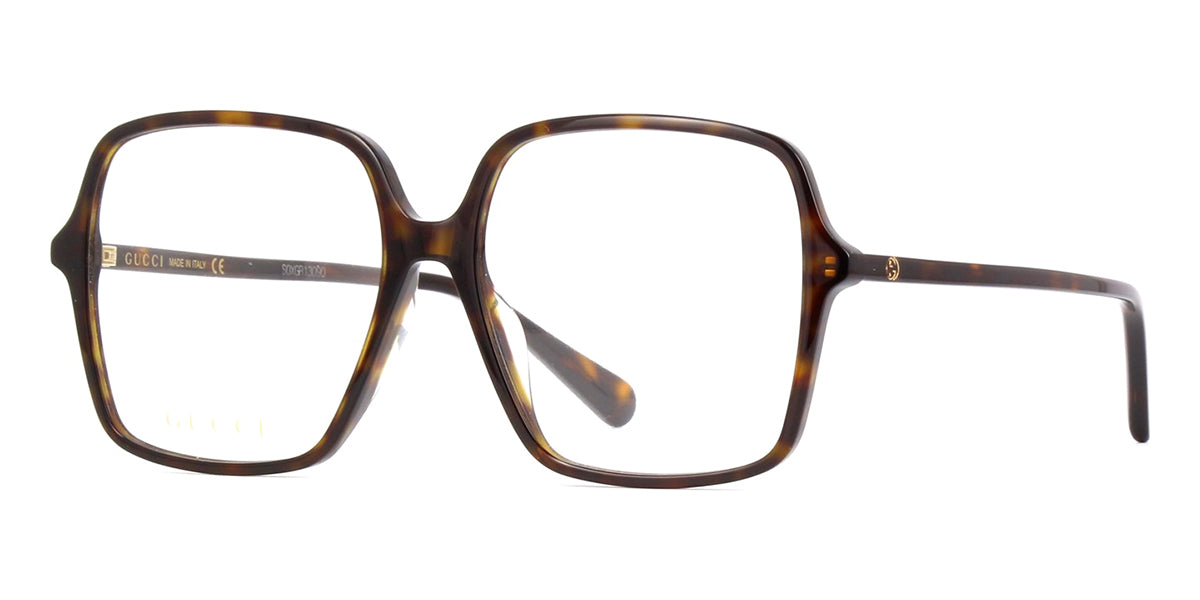
Vintage style glasses for no nose bridges
The Gucci GG1003OA 002 is a retro-inspired frame that harks back to the oversized optical style of the 1970’s. With its boxy rectangular shape and tall lens heights, these frames exude a quiet confidence. With heightened nose pads, this retro-looking frame is tailored for those with a low nose bridge, ensuring a comfortable fit without sacrificing style.
If you’re looking for a statement pair of spectacles, this edition comes in tortoiseshell or black colourways which make it ideal for both professional settings and casual outings. Definitely on the larger side, these boxy frames will elevate your everyday look with a touch of Italian luxury.
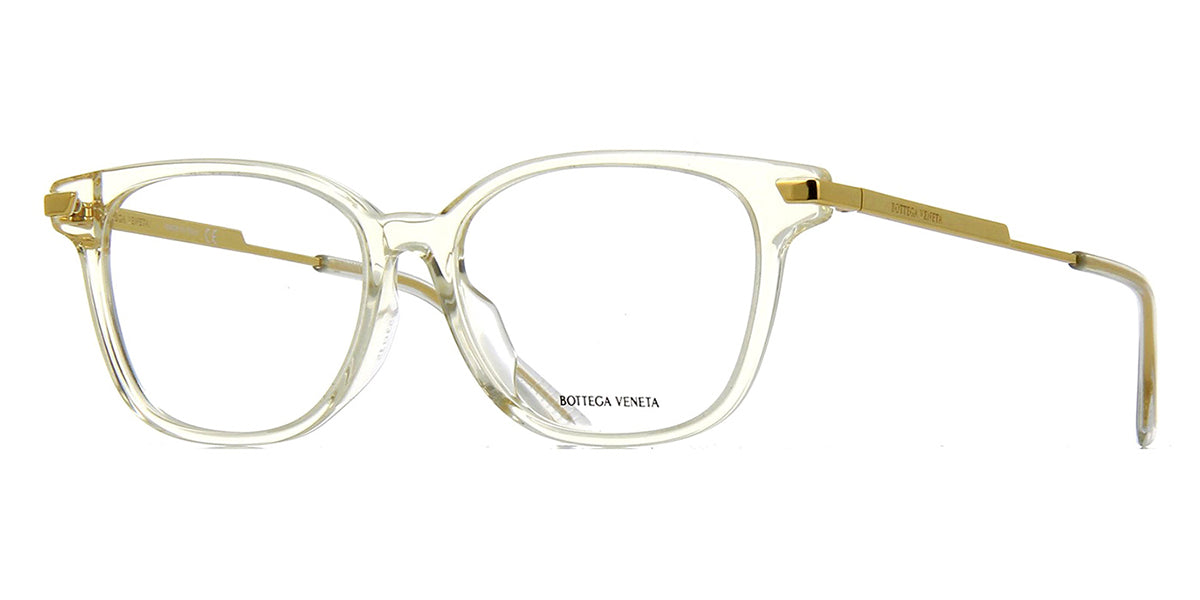 Transparent no nose bridge glasses
Transparent no nose bridge glasses
If you like transparent or crystal acetate frames, the Bottega Veneta BV1074OA 003 offer a refined take on contemporary eyewear. Their rounded silhouette, combined with yellow-tinted crystal acetate, creates a versatile accessory that complements a variety of face shapes.
Designed with Asian-fit features, these glasses provide a secure and comfortable fit, making them a perfect choice for anyone looking to update their eyewear collection with something that is both stylish and practical. The subtle branding adds a dash of sophistication, making these frames a chic addition to any wardrobe.
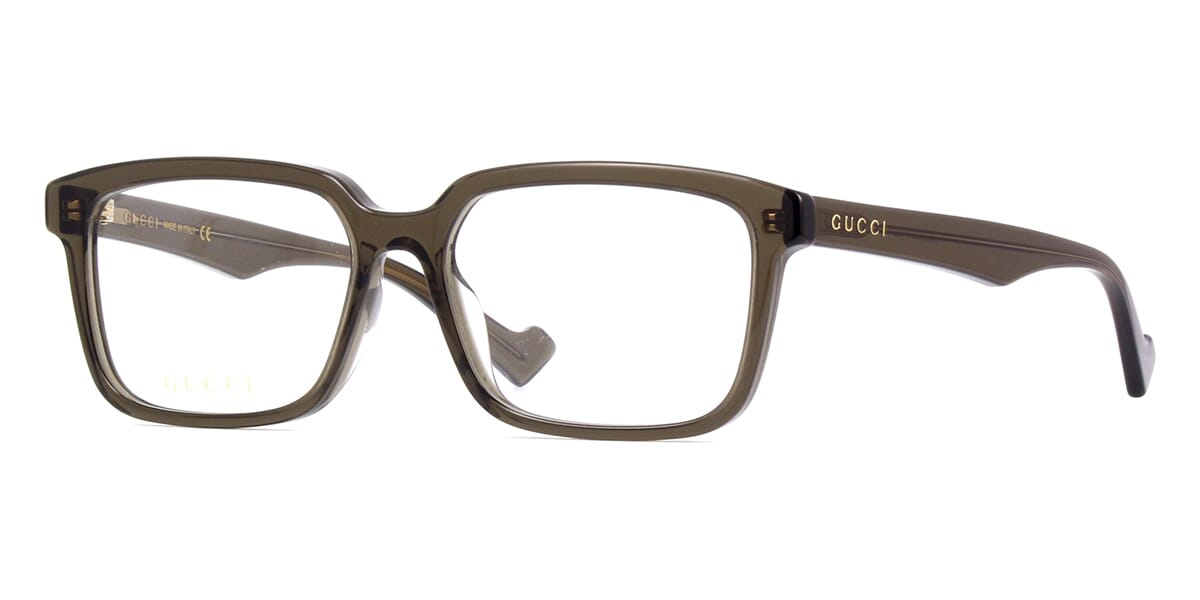
Boxy style Asian-fit glasses
For a chunky eyeglasses style, the Gucci GG0966OA 003 is a bold statement piece for those looking to make a strong impression. Featuring a slightly oversized square shape and crafted in a dark transluscent brown acetate, this frame is the epitome of mid-century eyewear, yielding a bold look with subtle warm tones.
For you, the low bridge wearer, taller nose pads and narrow bridge-width of 15mm ensures they rest properly on the face, offering both style and comfort without sliding down. These thick frames are ideal for anyone wanting to blend classic fashion with contemporary design, making them a must-have for a standout look.
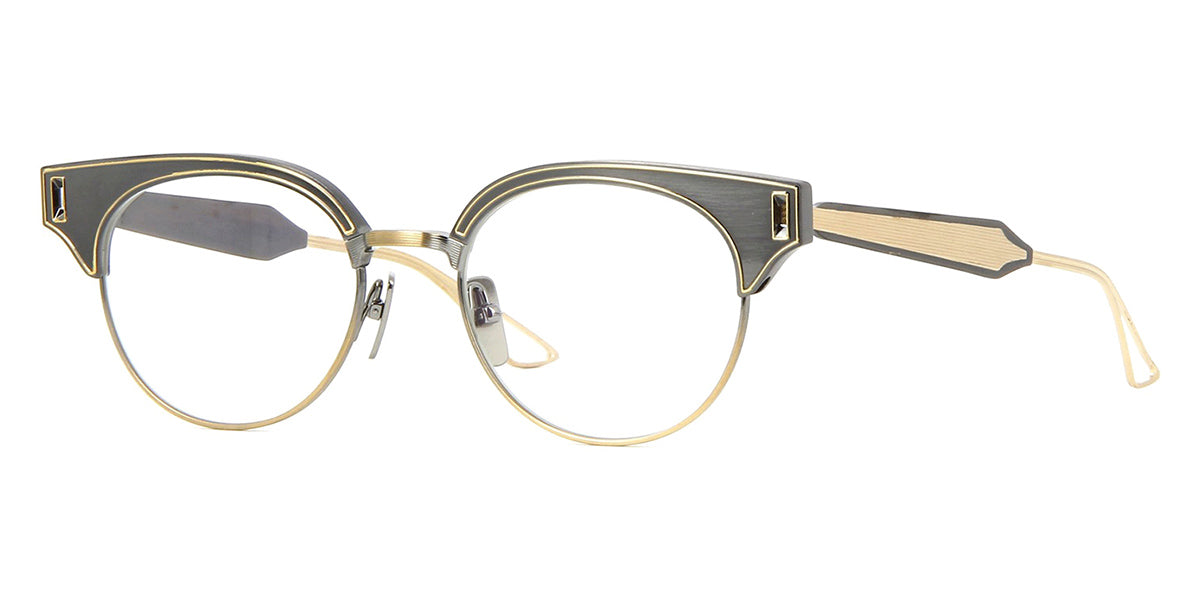
Clubmaster glasses for low bridge wearers
Positioned at the luxury-end of the market are the Japanese-made Dita Brixa DTX 109 02 frames. These ‘browline’ style glasses blend delicate wire rims with a gold-trimmed acetate upper half; an optical style that rose to fashion-prominence during the ‘50s and ‘60s.
With their sleek, Clubmaster-inspired design and lightweight construction, these glasses are both stylish and functional. The gold metallic accents add an ornate touch, while the low-bridge fit is specifically designed to accommodate Asian facial features, ensuring a snug and comfortable wear. These luxurious frames are perfect for those seeking a fashionable yet comfortable option in one of the most timeless optical styles.
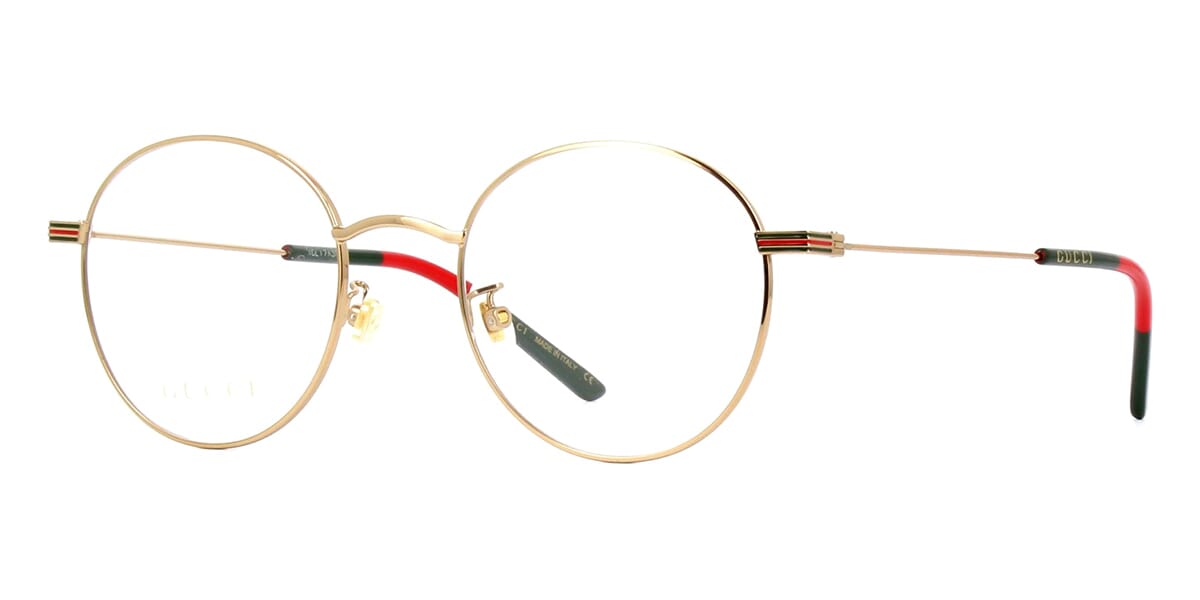
Vintage, thin round wires
Possibly the most famous glasses style, worn by the likes of John Lennon, thin round glasses are a quintessential look. For low bridge spectacle wearers, check out the Gucci GG1054OK 001.
The key benefit to wire frames such as these are their adjustable pad arms. They can be bent to suit your nose so the frame rests at the proper height, upwards and off your cheeks. Better still, the pads actually swivel which makes them incredibly comfortable to wear for long durations.
Wire rimmed frames like these are also typically very lightweight, therefore they tend to stay in-place more easily compared to heavier acetate frames. If you prefer elegant, lightweight frames, wire eyeglasses are a great way to go.
Pro-tip: adjustable nose pads can also be replaced with silicone ones in various sizes and colours. There are some big ‘pillow’ style pads out there which you can have installed by an optical technician.

How to pick the right glasses for no nose bridges
If you have a low or no nose bridge, it’s true that your options are more limited. Typically, it’s only the larger optical brands offer low-bridge or ‘geo-fit’ frames.
But that doesn’t mean you have to battle with poorly fitting glasses or modify them with sticky nose pads from Amazon.
To help you find better fitting glasses, here are some basic tips;
#1 Opt for Asian-Fit or Low-Bridge Glasses
If you’re new to wearing glasses, check to see if there are low-bridge versions available when shopping for new glasses. These frames are specifically designed with higher nose pads, a flatter frame-front and strongly curved temple arms.
#2 Choose Frames with Adjustable Nose Pads
Adjustable nose pads allow you or your optician to customize the fit, ensuring that the glasses sit correctly on your face without slipping. Thankfully, both metal or acetate frames can be fitted with adjustable pad-arms and pads.
#3 Consider Lightweight Materials
Lightweight frame materials, such as titanium or acetate, can prevent your glasses from sliding down your nose. This helps to reduce the pressure on your bridge, enhancing comfort and security.
Another great way of reducing weight is with high index lenses made from polycarbonate or Trivex. These lightweight lens materials are thinner and flatter which look better in your frame whilst keeping the weight down.
#4 Select a Frame Shape that Complements Your Face
Round or oval frames can soften angular features, while square or rectangular frames can add structure to rounder faces. The right frame shape will balance your features, ideally whilst fitting comfortably on your nose.
#5 Ensure the Frames Don’t Rest on Your Cheeks
Glasses frames should sit comfortably on your nose without resting on your cheeks. If they do, especially when you smile, the bridge-width is likely too wide for you. For a guide to how glasses frames are measured, check out this handy blog post.
#6 Look for Tall Nose Pads
Tall nose pads can help lift the frame off your face, providing a better fit for low or no nose bridges. This feature is crucial in preventing the glasses from sliding down.
#7 Try Frames with a Flatter Frame Curve
Glasses frames naturally have a curve to accommodate your lenses, also known as base curve. For low bridge glasses wearers, a flatter frame curve, can help the glasses sit securely on your face, reducing the likelihood of slipping and improving overall comfort.
#8 Test for Comfort
Always try on frames before purchasing. Walk around, nod your head, look up and look down to test how they fit and feel. Silly as it may seem, another great test is to excessively smile to ensure the lower rims don’t touch your cheeks. If they do, you should ask for assistance in terms of frame sizing, alternative or adjustments.
#9 Ask for Adjustments
If your glasses aren’t fitting perfectly, ask your optician or the place where you bought the frames to make adjustments. Minor tweaks to the nose pads or temple arms can significantly improve comfort and fit.
#10 Prioritize Quality
Invest in high-quality glasses that offer durability, adjustable features, and comfortable materials. High-end frames often come with better design options that cater to low-bridge needs.
Conclusion
Finding the right glasses for a low or no nose bridge can be challenging, but with the right approach, you can achieve both comfort and style. We’ discussed the importance of choosing frames that cater to your specific facial structure, focusing on features like tall nose pads, adjustable fit, and lightweight materials. By understanding these key elements, you can avoid common issues like slipping glasses and discomfort.
Key Takeaways
- Opt for low-bridge or Asian-fit glasses designed for your facial structure.
- Choose frames with tall or adjustable nose pads for a better fit.
- Consider lightweight materials like titanium or acetate to prevent slipping.
- Ensure frames don’t rest on your cheeks, especially when smiling.
- Prioritize quality frames that offer durability and customization options.
By keeping these points in mind, you can find glasses that not only fit well but also enhance your overall look.
FAQ's

How do you wear glasses with a low nose bridge?
The best way to wear glasses with a low nose bridge is so that the frame doesn’t rest low, making contact with your cheeks. Ideally your eyes are fairly central to each lens and there’s no pinching-points or excessive pressure on your nose. This can be achieved with low bridge glasses which are specifically designed and altered for people with high cheekbones and low nose roots (typically with Asian genetics).
Is it normal to not have a nose bridge?
Yes, the absence of (or a very low) nose bridge is very common amongst African or East Asian genetics. This is one of the structural facial characteristics that can make it difficult for certain glasses wearers to find spectacles or sunglasses that rest securely on their nose. Thankfully, Asian-fit eyewear caters for this issue via subtle changes to the curvature, shape and overall design of particular optical frames.
Can a nose bridge on glasses be replaced?
This depends on the type of frame you have. Single-piece frames (made from acetate) cannot have their bridges replaced, but can have interchangeable after-market bridges added. It’s more common for sports-orientated frames to use separate bridges which are more easily replaced.
Hopefully, you found this article helpful.
Thanks for stopping by.